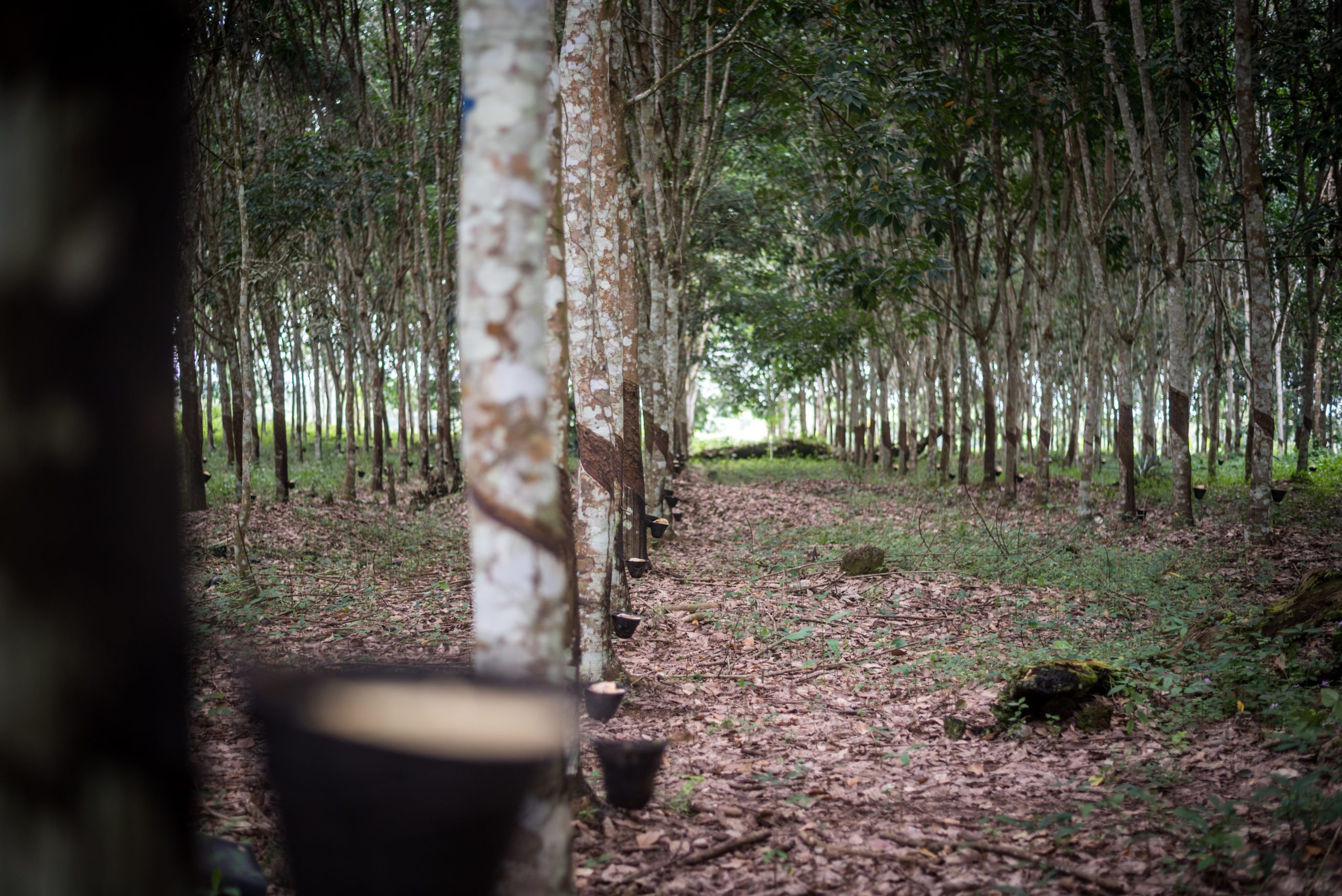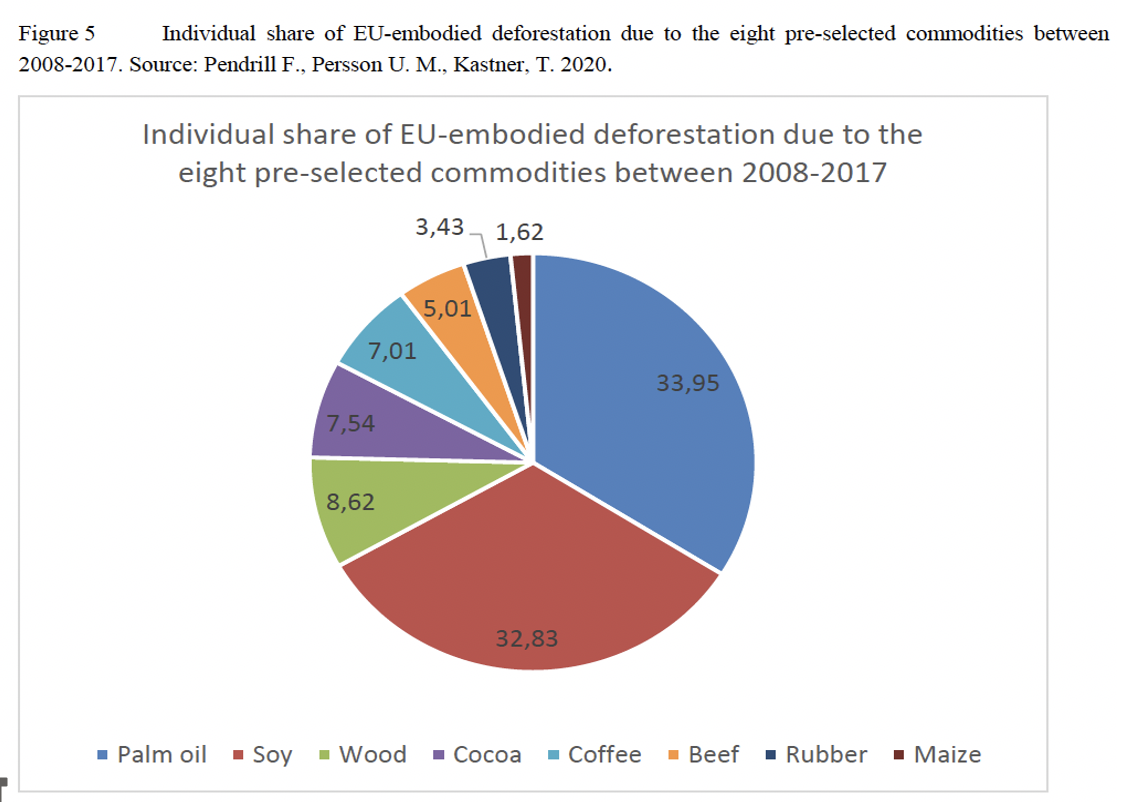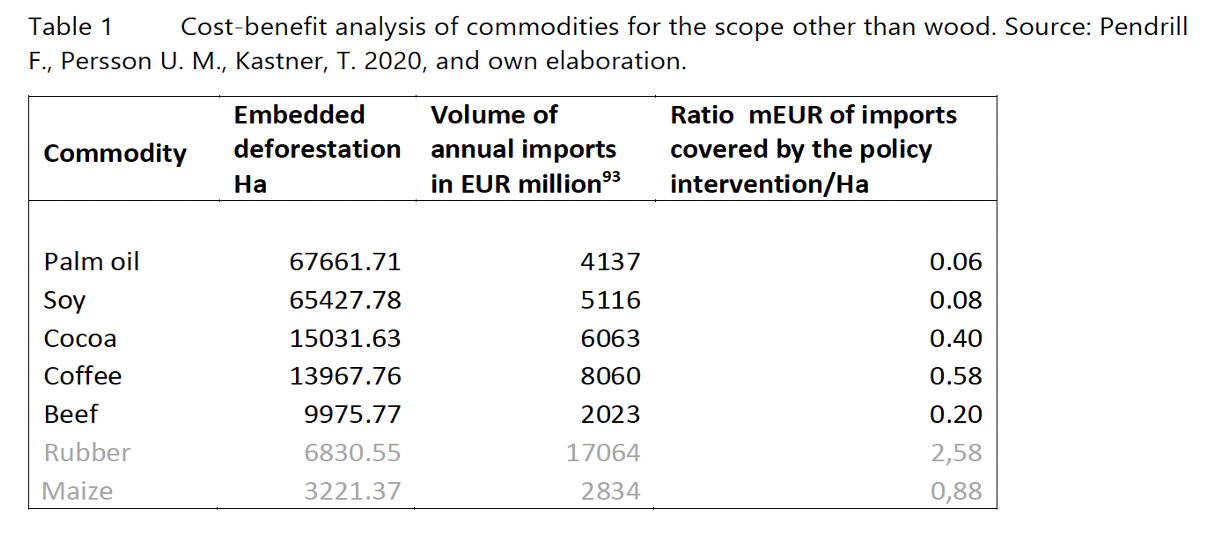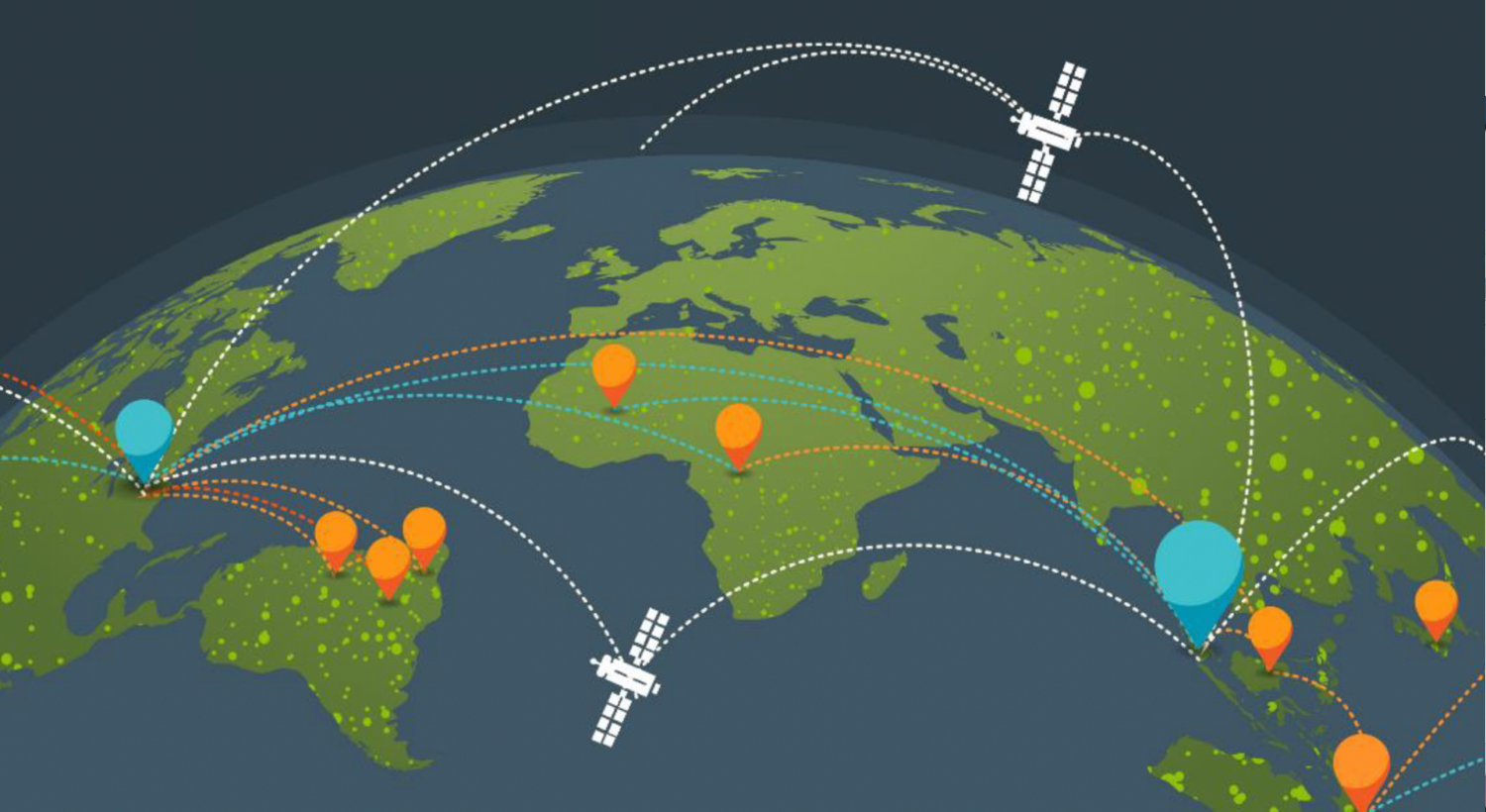
Why Rubber Must be Kept in the EU’s Anti-Deforestation Law
Read the full Mighty Earth report on the EU’s anti-deforestation law
Mighty Earth is gravely concerned that rubber has been excluded from the European Commission’s proposed new anti-deforestation legislation to tackle EU-driven deforestation – and joins civil society and Indigenous peoples’ groups calling for rubber to be restored to the EU’s flagship law designed to eradicate deforestation from its global commodity supply chains. Due for release on 17 November 2021, the EU’s new anti-deforestation law will apply to key Forest and Ecosystem-Risk Commodities (FERCs) – which until recently was anticipated would cover key known forest-risk commodities,[1] including natural rubber.
However, a leaked European Commission Impact Assessment [2] shows rubber has been dropped from the list of commodities covered by the forthcoming legislation. Instead, the new law will only apply to beef, palm oil, soy, wood, cocoa and coffee. The EC’s ssessment ranked rubber as responsible for the second lowest amount of embedded deforestation out of eight forest-risk commodities assessed, and concluded that including natural rubber in the legislation,
“…would require a very large effort, with little return in terms of curbing deforestation driven by EU consumption.”
Listed as one of the EU’s critical raw materials, the EU is a key actor in global rubber markets. The EU consumed an estimated 1.02 million tonnes of natural rubber for vehicle tires and non-tire use in 2020,[3] some 318 million auto tires were produced in European plants last year, [4] and three of the six largest global tyre and rubber corporations – Michelin, Continental and Pirelli – are based in the EU. With latest industry forecasts showing rubber demand is set to boom by a third by 2030,[5] this briefing sets out key reasons why failure to include rubber in the EU’s flagship anti-deforestation law poses a grave threat to millions of hectares of tropical forests and biodiversity in Southeast Asia, Africa and Latin America over the coming decade.
Working with a global rubber and deforestation expert, Mighty Earth analysed the dataset used in the EC Impact Assessment to quantify the embodied deforestation figures for rubber. We found that the dataset used by the European Commission only covers unprocessed natural rubber imports into the EU, and so misses large quantities of imports of processed rubber tires and other products, much of which may include embodied deforestation. We estimate embodied deforestation data for about two thirds of all natural rubber imports into the EU are potentially missing in the EC’s impact assessment for rubber. In the light of this incomplete and flawed data, we believe the EC’s assessment may significantly underestimate the amount of potential deforestation embedded within natural rubber imports to the European Union.
We believe dropping rubber based on flawed deforestation data would be a major mistake and a huge set-back in the fight against deforestation, biodiversity loss and the achievement of the EU’s climate change goals.
1) Rubber booms cause mass deforestation and biodiversity loss
Fuelled by a boom in market demand, rapid expansion in rubber production since 2000 has had a devastating impact on millions of hectares of forests, ecosystems, habitats and biodiversity, as well as the human rights and livelihoods of hundreds of local and Indigenous communities.[6]
A study last year found over five million hectares of tropical forests were cleared across mainland Southeast Asia and sub-Saharan Africa for rubber plantations between 2003 and 2017.[7] Similarly, a 2018 study [8] for the European Commission attributes some three million hectares of forest loss in Southeast Asia alone – including in Cambodia, Indonesia, Laos, Myanmar, Thailand and Vietnam – directly to an increase in rubber cultivation since 2000.[9] In one of the worst-hit countries, Cambodia, over half a million hectares of tropical forest was cleared and replaced with rubber trees between 2001-2015 – accounting for 23% of Cambodia’s gross forest loss.[10] Studies show much of the rubber now grown in Cambodia ends up in European auto tyres; an estimated 25% of the rubber land share harvested in Cambodia goes to produce tyres in the EU.[11]
To highlight the devastating impact of unrestrained rubber expansion, groups like Greenpeace, Global Witness, Oakland Institute, Inclusive Development International and Mighty Earth have documented harrowing evidence of widespread deforestation, land degradation, forced eviction, illegal logging, livelihood destruction, harassment, threats, intimidation, criminalisation, human rights abuses, and biodiversity and habitat loss linked to the expansion of monoculture rubber plantations in numerous tropical countries, including in Cambodia, Cameroon, Cote d’Ivoire, Laos, Myanmar, Papua New Guinea and Indonesia.
2) Rubber demand set for 33% boom by 2030
There is a lack of official, openly available data on most aspects related to natural rubber use and production. Currently operating within these constraints, academics find nearly three quarters of global rubber production is used to produce tyres,[12] however, rubber is also used in numerous other ways, from engineering and industrial applications, to boots, mats, condoms, apparel and latex gloves. Following a recent lull in expansion and a sharp contraction under Covid-19, global demand for natural rubber will soon exceed pre-pandemic levels[13] and is forecast to jump by a third by 2030.[14] Based on latest industry figures, the International Rubber Study Group (IRSG) forecasts global natural rubber demand is set to boom by 33% by 2030 – up from 12.7 million tonnes in 2020 to 16.9 million tonnes in 2030.[15] Similarly, IRSG figures show global consumption of natural rubber for tires and tire products is forecast to jump by 28% over the decade to 2030 – rising from 9,125,000 tonnes in 2020 to 11,720,000 tonnes in 2030.[16]
3) Mass deforestation, carbon emissions, biodiversity loss & species extinction predicted
Geographically restricted to growing Havea brasiliensis rubber trees in the tropics and within certain latitudes, smallholder farmers produce about 80% of the world’s rubber on about 12 million hectares of land – often competing for land and forests with other tropical crops such oil palm, cocoa or cassava.[17] With rubber yields not increasing,[18] scientists say meeting increased demand still requires more land area and will not be met by increased yields on existing planted rubber area.[19]
Alarmingly, leading rubber academic experts say millions of hectares of forest clearances are predicted as rubber demand rises and warn of associated damaging carbon emissions[20] and catastrophic biodiversity [21] and major species losses – including increased extinction risks for some 74 extinction-threatened mammals, birds, amphibians and reptiles – including threatened bats, frogs and forest shrews.[22] Scientists estimate conversion of intact forest to rubber will generate carbon losses of 141.5 tC per ha in dense forest and 51.5 tC per ha in open forest, [23] and found conversion of lowland forest to rubber generates soil organic carbon emissions, too.[24]
To give a sense of the scale of the dire threat posed to forests, ecosystems and biodiversity, academics estimated in 2015 that 4.3–-8.5 million ha of additional rubber plantations were required to meet rising demand by 2024,[25] while industry estimates in 2018 found 2.5–3.9 million ha of additional land area will be required to meet rising demand by 2027.[26]
4) EU rubber consumption to grow 14% by 2030
While the bulk of the additional demand for natural rubber will go to booming Chinese and Asia-Pacific markets,[27] consumption in the EU is still highly significant. As the second largest rubber trading block to China, the EU consumes some 9% of the natural rubber produced globally. [28] Furthermore, the IRSG forecasts EU consumption of natural rubber is set to rise steadily by 14.5% over the decade to 2030 – rising from 1.023m tonnes in 2020 to 1.171m tonnes in 2030.[29] A recent study demonstrates that mobility in the EU (for personal and goods transport) uses nearly a fifth of the annual harvest of natural rubber in several producer countries, contributing to the expansion of rubber plantations in the tropics.[30] The study finds car use is the main driver of natural rubber consumption in the EU and notes that car use is likely to increase with the economic development of eastern EU countries (see Fig.2).[31]
5) EU’s rubber land footprint set to grow
The EU’s global rubber land footprint is already large and is expected to grow. An estimated area of 594,000 ha is required to produce the natural rubber consumed annually through tire use in the EU,[32] corresponding to 5% of total global area harvested annually.[33] This land footprint is mainly located in Indonesia (32%), Thailand (23%), Malaysia (11%), Cote d’Ivoire (10%), and China (10%).
At the national level the share of land harvested to produce tires for use in the EU is particularly high in Cambodia (25%), while in Cote d’Ivoire (see Fig.4), Guinea and Cameroon, more than 15% of the area under mature rubber plantations serves European mobility (for passenger cars, trucks and vans).[34] While the primary hotspot for rubber expansion is Southeast Asia, scientists say similar trends are being observed in Africa.[35] Furthermore, the EU’s strategy to reduce its dependence on Southeast Asia[36] means that Africa is likely the new deforestation frontier. An estimated 25% of the natural rubber imported into Europe now originates from Africa,[37] and expansion could occur in climatically suitable but highly biodiverse new frontiers such as Guinea [38] or Central Africa, where foreign investment in industrial plantations is welcome, threatening vast areas of forested land that are not adequately protected by governments.[39]
6) Rubber was previously considered a FERC by the EC, and is still considered a FERC by the US and UK
The European Commission’s decision to drop rubber from the EU’s flagship anti-deforestation legislative proposal has little logical basis. Rapid expansion of rubber production in Southeast Asia and other tropical and sub-tropical areas has long been identified by the EC and other key actors [40] as one of the top seven agricultural imports into the EU associated with deforestation and forest degradation.
As early as 2013, a major report [41] for the European Commission on imported deforestation identified rubber as an important contributor to deforestation, while a key follow-up study for the EC in 2018 [42] and a subsequent EC Communication report to the EU Parliament in 2019 included rubber alongside palm oil, meat, beef, soy, cocoa, coffee, maize and timber as key agricultural imports into the EU associated with deforestation and forest degradation.[43]
Most importantly, the European Parliament passed a Resolution[44] on 22 October 2020 which recommended the European Commission draw up a legal proposal to tackle imported deforestation and instructed the EC that the proposal should cover all commodities that are most frequently associated with deforestation, degradation of natural forests and conversion and degradation of natural ecosystems.[45] Significantly, the Resolution instructed the EC that the list of commodities covered by the law should comprise “at least palm oil soy, meat, leather, cocoa, coffee, rubber and maize.” [46] Furthermore, other key countries that are currently drawing up similar supply chain anti-deforestation draft legislation, such as the US and UK, currently both include rubber as a key forest and ecosystem-risk commodities.
7) Flawed deforestation data used in EC Impact Assessment
Mighty Earth has reviewed a copy of the leaked European Commission Impact Assessment and assessed the key research dataset with which the EC based their cost-benefit analysis to assess the share of embodied deforestation for a list of eight forest-risk commodities between 2008-2017 (see Fig.1).

Figure 1: Individual share of EU-embodied deforestation due to the eight pre-selected commodities between 2008-2017, Source: Pendrill F, Persson U M, Kastner T, 2020 (EC Impact Assessment, 2021)
The EC Impact Assessment cost-benefit analysis finds that rubber and maize contain the least amount of embodied deforestation out of the eight commodities (see Fig.2).

Figure 2: Cost-benefit analysis of commodities for the scope other than wood
Source: Pendrill F, Persson U M, Kastner T (2020) and own elaboration (EC Impact Assessment, 2021)
The EC Impact Assessment cost-benefit analysis concludes:
“Maize and rubber account for the smallest fraction of embodied deforestation among the commodities analysed, while their trade volumes are very large (around EUR 2.8 billion per year for maize and 17.6 billion for rubber). Including these two commodities in the scope would require a very large effort, with little return in terms of curbing deforestation driven by EU consumption.”
However, having confirmed with a lead author [47]of the Pendrill et al (2020) [48] embodied deforestation dataset and research[49] – used in the EC Impact Assessment cost-benefit analysis – and taken advice from a global academic expert in natural rubber, deforestation and sustainability issues,[50] Mighty Earth’s considered position is that the Pendrill et al (2020) dataset [51] used by the EC for their analysis of embodied deforestation for natural rubber in particular has specific limitations that mean that they may significantly underestimate the amount of embodied deforestation for rubber imported into the EU.
The key flaw in the use of the Pendrill et al (2020) dataset [52] to assess embodied deforestation for rubber imported to the EU is that the dataset only assessed data from the FAOSTAT database relating to trade to the EU in unprocessed natural rubber. An author of the Pendrill et al dataset recently confirmed to Mighty Earth that “processed rubber imports are not included in our numbers.” [53] This confirmation is significant because it means that large quantities of processed new rubber tire products imported into the EU – which potentially contain large amounts of embodied deforestation – are left out entirely from the dataset and its use therefore may significantly underestimates the embodied deforestation risk for rubber in the EC’s key assessment.
A more recent and in-depth analysis of the rubber supply chain for tires into the EU from the same research group, drawing on FAOSTAT but also COMTRADE databases of processed rubber products, shows that very substantial shares of processed natural rubber produced in countries with expanding rubber area (Cote d’Ivoire, Thailand, Indonesia) are imported to the EU.[54] It is highly likely that a re-analysis by the EC of embodied deforestation in processed rubber products captured by the COMTRADE database would substantially increase embodied deforestation risk, and that this risk is particularly high in Africa where deforestation for agro-industrial plantations is actively encouraged, and where the EU seeks to increase its share of rubber imports from.
Mighty Earth recently searched the Eurostat database for both unprocessed rubber and processed rubber imports – including processed new tires, inner tubes, apparel, hygiene and pharmaceutical articles and vulcanised rubber – and found 5.9 million tonnes in total were imported into the EU in 2019, including 2.3 million tonnes of unprocessed natural rubber, as well as 1.2 million tonnes of processed new rubber tires, and 841,000 tonnes of processed rubber inner tubes, pharmaceutical articles, apparel, retreaded tires and vulcanised rubber products.[55] in short, we found the rubber-related data referred to in the EC assessment captures less than three quarters of gross natural rubber imported into the EU, and so may significantly underestimate the amount of embodied deforestation from all natural rubber coming into Europe. Dropping rubber from the EU’s anti-deforestation law on the basis of inaccurate or incomplete deforestation data for rubber seems entirely flawed and unscientific.
Conclusion: The European Commission should restore rubber to EU anti-deforestation law
The EU plays a central role in the global rubber and tire supply chain. Seven out of ten of the top global tire and rubber corporations have their headquarters or key rubber and tire plants in Europe – including industry giants such Bridgestone, Continental, Goodyear, Hankook, Michelin, Pirelli and Sumitomo. [56] With global rubber demand set to boom by a third by 2030 and steady growth in EU consumption forecast, the threat of millions of hectares of deforestation of biodiversity and carbon-rich forests and ecosystems over the coming years is real, and extremely urgent. That’s why we’re urging the EU to restore rubber to the EU’s flagship anti-deforestation law and pressing the EU to act now to do its part to eliminate deforestation and rights abuses from global rubber supply chains and consumer markets.
Author:
Alex Wijeratna, Mighty Earth, Director of Special Projects
[1] European Commission (2019) Communication from The Commission to the European Parliament, The Council, The European Economic and Social Committee and the Committee of the Regions, Stepping up EU Action to Protect and Restore the World’s Forests, 23 July 2019
[2] ‘Leaked EU anti-deforestation law omits fragile grasslands and wetlands’, The Guardian, 14 September 2021, Jennifer Rankin
[3] IRSG (2021) World Rubber Industry Outlook: Review and Prospects, July 2021, IRSG: Singapore
[4] ETRMA (2020) The European Tyre Industry Facts and Figures 2020 Edition, European Tyre & Rubber Manufacturers’ Association (ETRMA): Brussels
[5] IRSG (2021) World Rubber Industry Outlook: Review and Prospects, July 2021, IRSG: Singapore
[6] Millard E (2019) Recent Experiences from the Natural Rubber Industry and its Movement Towards Sustainability, Sustainable global value chains, 1st ed. Ed. M. Schmidt, 499-520. Springer: New York
[7] Wang M H et al (2020) Reconciling Rubber Expansion with Biodiversity Conservation, Current Biology 30, 3825-3832, 5 October 2020
[8] COWI (2018) Feasibility study on options to step up EU action against deforestation, Final Report, COWI A/S, Denmark
[9] COWI (2018) Feasibility study on options to step up EU action against deforestation, Final Report, COWI A/S, Denmark
[10] Grogan K et al (2019) Unravelling the link between global rubber price and tropical deforestation in Cambodia, Nature Plants, Vol 5, January 2019, 47-53
[11] Laroche P et al (2021) Assessing the contribution of mobility in the European Union to rubber expansion, Ambio, A Journal of the Human Environment, 12 June 2021
[12] Laroche P et al (2021) Assessing the contribution of mobility in the European Union to rubber expansion, Ambio, A Journal of the Human Environment, 12 June 2021
[13] IRSG (2021) World Rubber Industry Outlook: Review and Prospects, July 2021, International Rubber Study Group: Singapore
[14] IRSG (2021) World Rubber Industry Outlook: Review and Prospects, July 2021, IRSG: Singapore
[15] IRSG (2021) World Rubber Industry Outlook: Review and Prospects, July 2021, IRSG: Singapore
[16] IRSG (2021) World Rubber Industry Outlook: Review and Prospects, July 2021, IRSG: Singapore
[17] Millard E (2019) Recent Experiences from the Natural Rubber Industry and its Movement Towards Sustainability, Sustainable global value chains, 1st ed. Ed. M Schmidt 499-520. Springer: New York
[18] FAOSTAT global natural rubber yield data, downloaded 6 October 2021
[19] Personal communication, Dr Eleanor Warren-Thomas, School of Natural Sciences, Bangor University, 6 October 2021
[20] Warren-Thomas E et al (2018) Protecting tropical forests from the rapid expansion of rubber using carbon payments, Nature Communications, Art. 911 (2018), 2 March 2018
[21] Warren-Thomas E et al (2015) Increasing Demand for Natural Rubber Necessitates a Robust Sustainability Initiative to Mitigate Impacts on Tropical Biodiversity, Conservation Letters, July/August 2015, 8(4), 230-241
[22] Wang M H et al (2020) Reconciling Rubber Expansion with Biodiversity Conservation, Current Biology 30, 3825-3832, 5 October 2020
[23] Warren-Thomas E et al (2018) Protecting tropical forests from the rapid expansion of rubber using carbon payments, Nature Communications, Art. 911 (2018), 2 March 2018
[24] van Stratten O (2015) Conversion of lowland tropical forests to tree cash crop plantations loses up to one-half of stored soil organic carbon, PNAS, 11 August 2015, 112(32) 9956-9960, 27 July 2015, Proceedings of the National Academy of Sciences of the United States of America (PNAS)
[25] Warren-Thomas E et al (2015) Increasing Demand for Natural Rubber Necessitates a Robust Sustainability Initiative to Mitigate Impacts on Tropical Biodiversity, Conservation Letters, July/August 2015, 8(4), 230-241
[26] IRSG (2018) World Rubber Industry Outlook: Review and Prospects to 2027, June 2018, IRSG: Singapore
[27] IRSG (2021) World Rubber Industry Outlook: Review and Prospects, July 2021, IRSG: Singapore
[28] ETRMA (2019) Sustainable Natural Rubber & European Commission Deforestation Agenda, 21 February 2019, ETRMA: Brussels
[29] IRSG (2021) World Rubber Industry Outlook: Review and Prospects, July 2021, IRSG: Singapore
[30] Laroche P et al (2021) Assessing the contribution of mobility in the European Union to rubber expansion, Ambio, A Journal of the Human Environment, 12 June 2021
[31] Laroche P et al (2021) Assessing the contribution of mobility in the European Union to rubber expansion, Ambio, A Journal of the Human Environment, 12 June 2021
[32] Laroche P et al (2021) Assessing the contribution of mobility in the European Union to rubber expansion, Ambio, A Journal of the Human Environment, 12 June 2021
[33] ETRMA (2019) Sustainable Natural Rubber & European Commission Deforestation Agenda, 21 February 2019, ETRMA: Brussels
[34] Laroche P et al (2021) Assessing the contribution of mobility in the European Union to rubber expansion, Ambio, A Journal of the Human Environment, 12 June 2021
[35] Laroche P et al (2021) Assessing the contribution of mobility in the European Union to rubber expansion, Ambio, A Journal of the Human Environment, 12 June 2021
[36] ETRMA (2019) Sustainable Natural Rubber & European Commission Deforestation Agenda, 21 February 2019, ETRMA: Brussels
[37] Laroche P et al (2021) Assessing the contribution of mobility in the European Union to rubber expansion, Ambio, A Journal of the Human Environment, 12 June 2021
[38] Wang M H et al (2020) Reconciling Rubber Expansion with Biodiversity Conservation, Current Biology 30, 3825-3832, 5 October 2020
[39] Feintrenie L (2014) Agro-industrial plantations in Central Africa, risks and opportunities, Biodiversity and Conservation, Ed. Hawksworth DL, June 2014, 23:1577-1589
[40] See: WWF (2021) Deforestation Fronts, Drivers and Responses in a Changing World, WWF: Gland, Switzerland; WRI (2020) Estimating the Role of Seven Commodities in Agriculture-linked Deforestation: Oil palm, Soy, Cattle, Wood Fiber, Cococa, and Rubber, Technical Note, October 2020, World Resources Institute: Washington DC, United States
[41] EC (2013) The impact of EU consumption on deforestation: Comprehensive analysis of the impact of EU consumption on deforestation, Final Report, Technical Report 2013, 063, European Commission, DG Environment: Brussels
[42] COWI (2018) Feasibility study on options to step up EU action against deforestation, Final Report, COWI A/S, Denmark
[43] European Commission (2019) Communication from The Commission to the European Parliament, The Council, The European Economic and Social Committee and the Committee of the Regions, Stepping up EU Action to Protect and Restore the World’s Forests, 23 July 2019
[44] European Parliament resolution of 22 October 2020 with recommendations to the Commission on an EU legal framework to halt and reverse EU-driven global deforestation 2020/2006(INL), see: https://bit.ly/2YLl5pV
[45] European Parliament resolution of 22 October 2020 with recommendations to the Commission on an EU legal framework to halt and reverse EU-driven global deforestation 2020/2006(INL), see: https://bit.ly/2YLl5pV
[46] European Parliament resolution of 22 October 2020 with recommendations to the Commission on an EU legal framework to halt and reverse EU-driven global deforestation 2020/2006(INL), see: https://bit.ly/2YLl5pV
[47] Personal communications with Florence Pendrill, PhD student, Department of Space, Earth and Environment, Chalmers University of Technology, Gothenburg, Sweden, 30 September 2021 to 6 October 2021
[48] Pendrill F et al (2020) Deforestation risk embodied in production and consumption of agricultural and forestry commodities 2005-2017, see: https://bit.ly/3lcP96U
[49] See: Pendrill et al (2019) Deforestation displaced: trade in forest-risk commodities and the prospects for a global forest transition, Environmental Research Letters, 14 (2019) 055003, 1 May 2019; Pendrill F et al (2019) Agricultural and forestry trade drives large share of tropical deforestation emissions. Global Environmental Change, Vol. 56, May 2019, 1-10
[50] Personal communication, Dr Eleanor Warren-Thomas, School of Natural Sciences, Bangor University, United Kingdom, 6 October 2021
[51] See: Pendrill F et al (2020) Deforestation risk embodied in production and consumption of agricultural and forestry commodities 2005-2017, see: https://bit.ly/3lcP96U; Pendrill et al (2019) Deforestation displaced: trade in forest-risk commodities and the prospects for a global forest transition, Environmental Research Letters, 14 (2019) 055003, 1 May 2019; Pendrill F et al (2019) Agricultural and forestry trade drives large share of tropical deforestation emissions. Global Environmental Change, Vol. 56, May 2019, 1-10
[52] Pendrill F et al (2020) Deforestation risk embodied in production and consumption of agricultural and forestry commodities 2005-2017, see: https://bit.ly/3lcP96U
[53] Personal communication with Florence Pendrill, PhD Student, Department of Space, Earth and Environment, Chalmers University of Technology, Gothenburg, Sweden, 6 October 2021
[54] Laroche P et al (2021) Assessing the contribution of mobility in the European Union to rubber expansion, Ambio, A Journal of the Human Environment, 12 June 2021
[55] Eurostat data on natural and process rubber imports into EU from Jan-December 2019, accessed by Dr Eleanor Warren-Thomas on 8 October 2021
[56] ETRMA (2019) European Tyre & Rubber Industry Statistics, Edition 2019, ETRMA: Brussels


